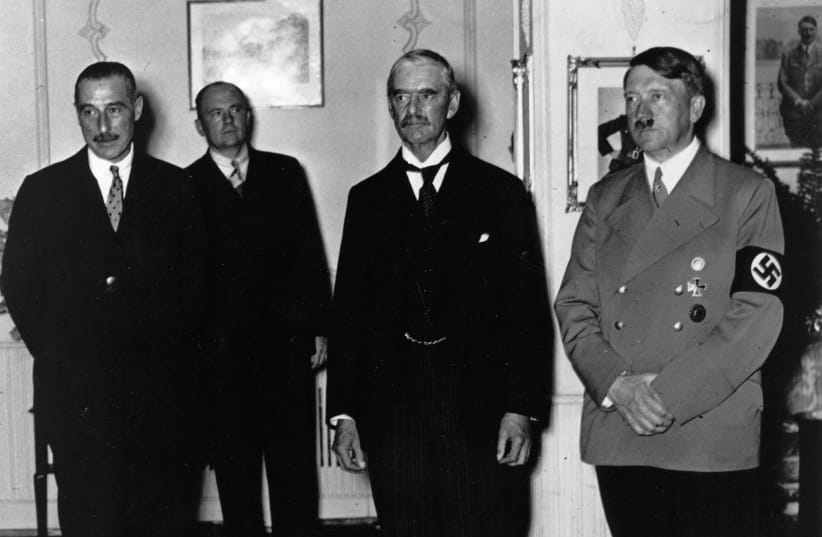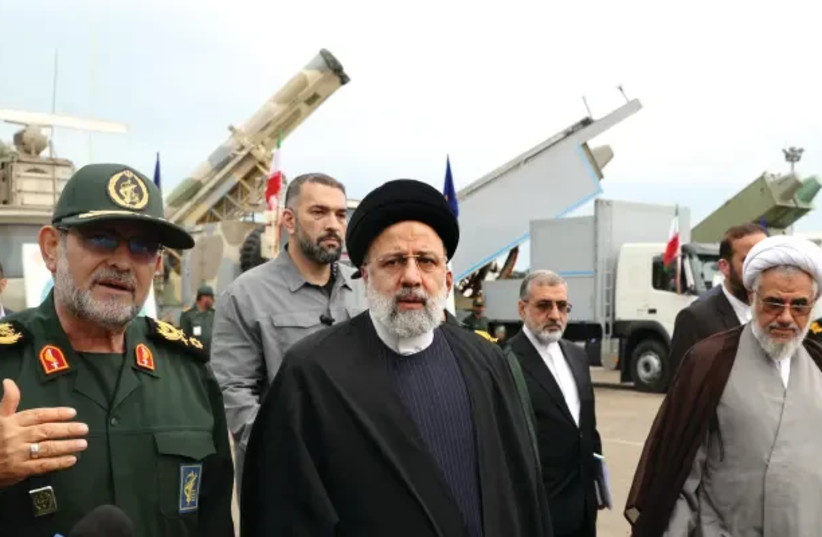The cat is out of the bag. Nearly half a century after they hijacked Persia, Iran’s ayatollahs greenlighted a frontal attack on a sovereign state.
Understandably, the decision to fire 350 missiles and drones at the Jewish state is measured first by a military yardstick, and then through its diplomatic and strategic dimensions, all of which suggest Tehran has made a big mistake.
Even so, the most crucial prism through which to assess this gamble is its historic dimension, meaning the Khomeini Revolution’s purpose. And seen this way, this attack was part of a pattern that follows the models of Imperial Japan, Nazi Germany, and Soviet Russia, all of which ended up in total collapse.
IRAN’S ATTACK was the current war’s third milestone. The first was the October 7 attack because terrorism never previously unleashed thousands of warriors along a broad, 40-kilometer front where they briefly conquered a whole region.
Having used mainly rifles, grenades, and arson, this attack’s initial success was partly due to its technological minimalism. The war’s other two milestones, the Houthi and Iranian missile attacks, were this simplicity’s inversion.
The Houthi attacks are a milestone because they mark the first military confrontation in outer space. The Iranian attack is a landmark not because of what it deployed but because of what it met – a defensive success that defies similar attacks’ success in the Ukraine war.
The Iranian move’s diplomatic dimension was no less thrilling, as it made Israeli and Arab warriors fight jointly a common enemy. That the first-ever Star Wars would be fought between the Jews and the Yemenis was improbable enough.
That shortly afterward Israelis and Arabs would become comrades in arms sounded until recently even more fictional.
What is the strategic meaning of the alignment?
The strategic meaning of this alignment is profound. Iran’s regional bullying has backfired. After having stationed militias in myriad Arab lands, stoked multiple civil wars, and established political bridgeheads in Baghdad, Sana, Damascus, and Beirut, Tehran’s aggression has brought the rest of the region together, and now made it fight back.
Until now, the mullahs’ strategic audacity seemed to be working, most impressively in 2019, when Houthi drones torched vast oil facilities in Saudi Arabia with impunity. However, as aggression’s dynamics go, its brazenness had to keep growing, and its futility had to emerge.
Now, as Iranian aggression registered its first grand failure while Iran’s society frays and its economy sinks, it is clear that Tehran is going the way of recent history’s greatest aggressors, all of whom – like the ayatollahs – wanted to dominate neighbors near and far.
THE MODERN era’s three global aggressors were different in their plans and motivations.
Nazi Germany was motivated by a racist theory, and its plan was to conquer Europe and enslave “inferior” neighbors. Imperial Japan was motivated by a thirst for natural resources and planned to dominate Asia, believing that was its destiny. The Soviet Union was motivated by the communist faith, which it hoped to spread worldwide.
All three were initially successful. The Japanese conquered large swathes of China and its neighbors, and dropped bombs from Pearl Harbor to Darwin, Australia; the Germans conquered turf from Tunisia to the Volga; and the Soviets occupied half of Europe and cast a network of proxies from Cuba to Vietnam. However, all three’s conquests unraveled within hardly two generations. Their plans were as mad as their beliefs.
Iran’s case is different, and yet the principle – that aggression contains the seeds of its own defeat – applies to it all the same.
Iran’s aggression is unique both technically and substantively. Technically, unlike Germany and Japan, it is endowed with natural resources, and in this regard resembles the Soviet Union. However, unlike the other great aggressors, all of which were driven by secular ideas, Iran is driven by religion.
The ayatollahs believe Iran should dominate the Middle East, Shi’ism should dominate Islam, and Islam should dominate the world. This is what made Tehran spend billions on the creation of militias that destabilize the Middle East, this is what made them dispatch terrorists from Buenos Aires to Bangkok, and this is what now makes them help Russia confront the West in Ukraine.
The free world’s response to this aggression is the same as it was in all three previous cases: strategic reluctance and psychological denial.
It’s easy to say this in hindsight, but the fact is that Germany’s aggression could have been preempted militarily, had the free world not lied to itself that Hitler’s appetite begins and ends in the Sudetenland. Similarly, in May 1939, when Soviet and Japanese armies clashed in Mongolia, the democratic powers could have sided with Moscow, and thus prevented the following summer’s Molotov-Ribbentrop Pact, and also the subsequent attack on Pearl Harbor.
That, of course, is not how democratic statecraft works. Just like for fascists war is a national value, a moral ideal and a political weapon of first resort, for us democrats it is anathema, trauma, and a weapon of last resort.
That is why the free world in 1956 abandoned Hungary to its Soviet masters’ devices rather than help its anti-Soviet revolt, even after Budapest declared its desire to join NATO.
That is why there was nothing surprising about this week’s pleas to Israel from both Europe and America to avoid a grand retaliation against Iran.
It’s a time-honored tradition in which everyone plays their part: the aggressors keep upping the ante, the free keep denying aggression’s threat, and history, while leading the aggressor to its dustbin, keeps raising freedom’s price.
So yes, the Islamic Republic of Iran, like Imperial Japan, Nazi Germany, and Soviet Russia, will sooner or later collapse. The only question is whether that will happen because of the free world’s conduct, or despite it.
www.MiddleIsrael.netThe writer, a Hartman Institute fellow, is the author of the bestselling ‘Mitzad Ha’ivelet Ha’yehudi’ (‘The Jewish March of Folly,’ Yediot Sefarim, 2019), a revisionist history of the Jewish people’s political leadership.

